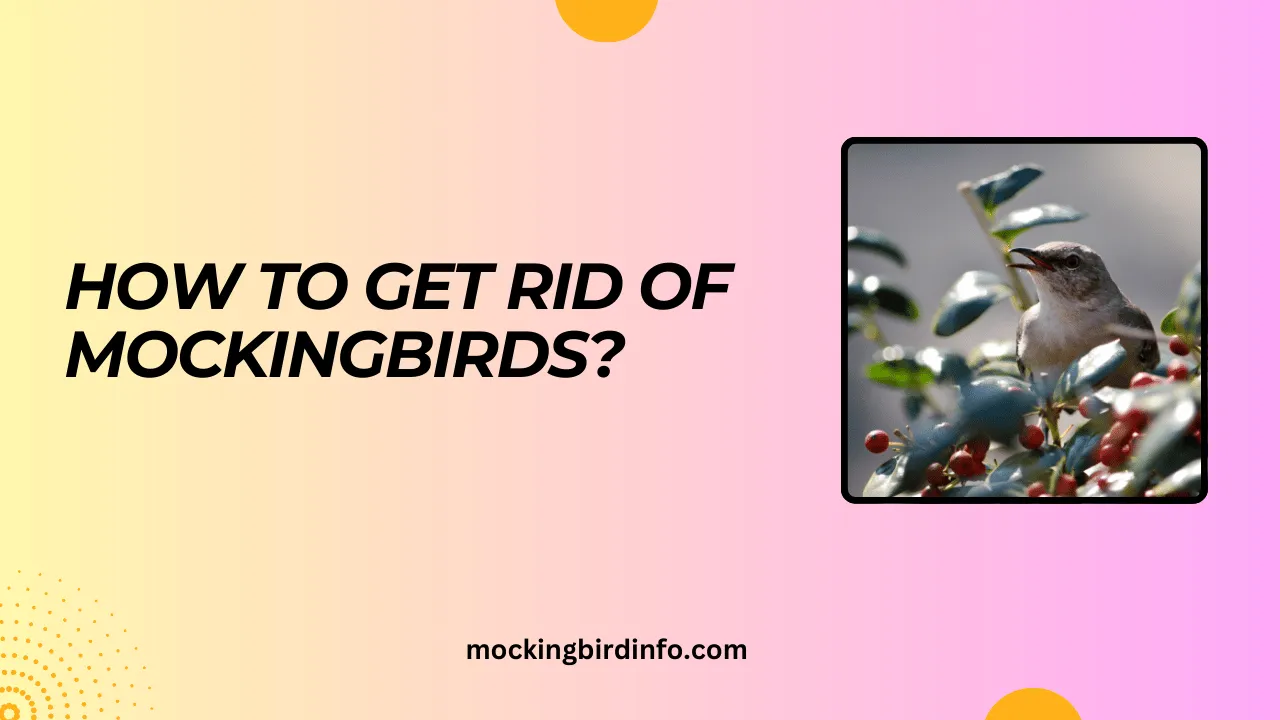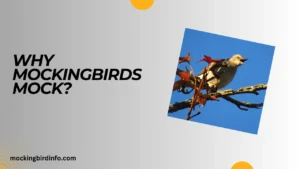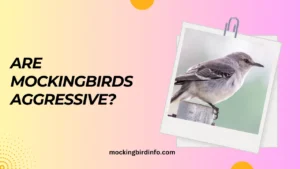If you’ve ever found yourself jolted awake at the break of dawn by the endless singing of a mockingbird, you know how quickly fascination can turn to frustration. These small, grayish birds, known for their uncanny ability to mimic a wide array of sounds—from car alarms to barking dogs—can be relentless when defending their territory.
Their performance, remarkable at first, often becomes an unwelcome morning routine that disrupts peace and quiet.The reality is, mockingbirds are not just harmless songbirds; they are fiercely territorial and can display aggressive behaviors, especially during the breeding season.
Their defensive dives and non-stop singing serve a purpose in the wild but can be disruptive when they choose to nest near human habitation. This presents a challenge: how do you deal with them effectively without violating wildlife protection laws?
In this post, we will explore the behavioral traits of mockingbirds, various non-lethal deterrent methods, and the legal considerations that come with bird control. By learning to manage these birds humanely and within legal boundaries, you can reclaim your peaceful space while respecting nature’s balance.
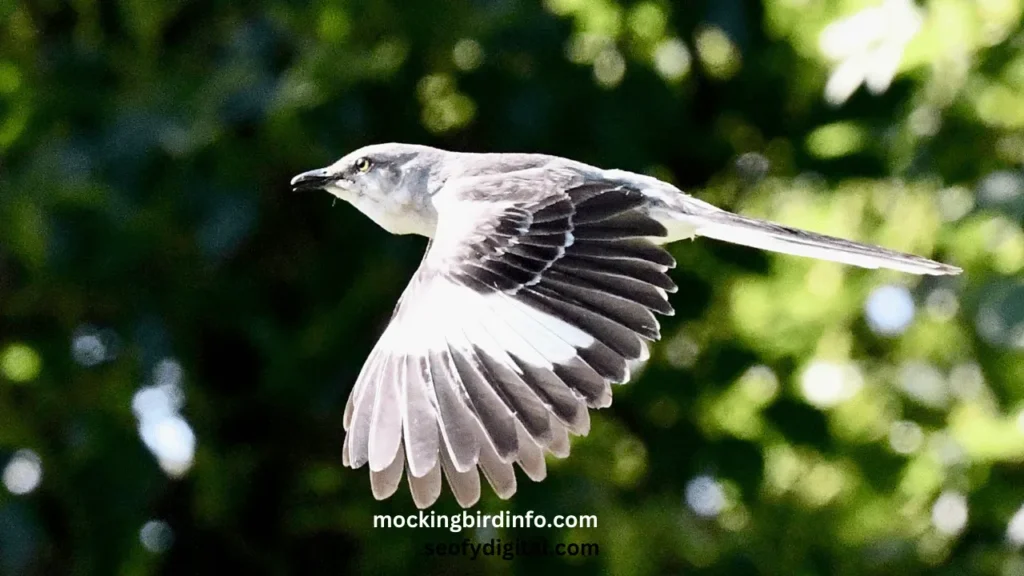
Contents
Understanding Mockingbird Behavior
Mockingbirds are admired for their mimicry, a behavior where they replicate the calls of other birds and various sounds from their environment. This skill helps them establish and defend territories.
Male mockingbirds, in particular, are known to sing for hours, especially during breeding season, which spans from early spring to late summer. Their singing may begin as early as 3 or 4 AM, contributing to disrupted sleep for anyone nearby.
Territorial behavior is another prominent trait. Mockingbirds are highly protective and will swoop or dive at anything they perceive as a threat, including humans, pets, and other birds. This behavior is instinctive and meant to safeguard their nesting sites, which are often built in dense shrubs or trees close to homes.
Mockingbirds play a beneficial ecological role by controlling insect populations and helping with seed dispersal. Despite their loud and aggressive behavior, these contributions underscore the importance of managing them without causing harm.
Non-Lethal Deterrents
Visual Deterrents are among the simplest ways to ward off mockingbirds. These include scarecrows that simulate the presence of predators or reflective materials like Mylar tape. The reflective surfaces flash in sunlight, creating an uncomfortable environment for the birds.
It’s crucial to move or reposition these objects regularly so that birds don’t become accustomed to them. Auditory Deterrents target the mockingbird’s keen sense of hearing. Pre-recorded distress calls or predator noises can be used intermittently to create a sense of danger.
For a more advanced option, ultrasonic bird repellers emit high-frequency sounds that humans cannot hear but birds find unpleasant. These devices are particularly effective when placed in areas where birds tend to congregate.
Physical Barriers like bird netting can be employed to protect gardens, fruit trees, or other outdoor areas that attract birds. The netting should be installed tightly, ensuring there are no gaps for birds to slip through.
Bird spikes can also be effective on surfaces where mockingbirds tend to perch, such as fence tops or window ledges. While these look sharp, they’re safe for the birds and simply prevent them from landing.
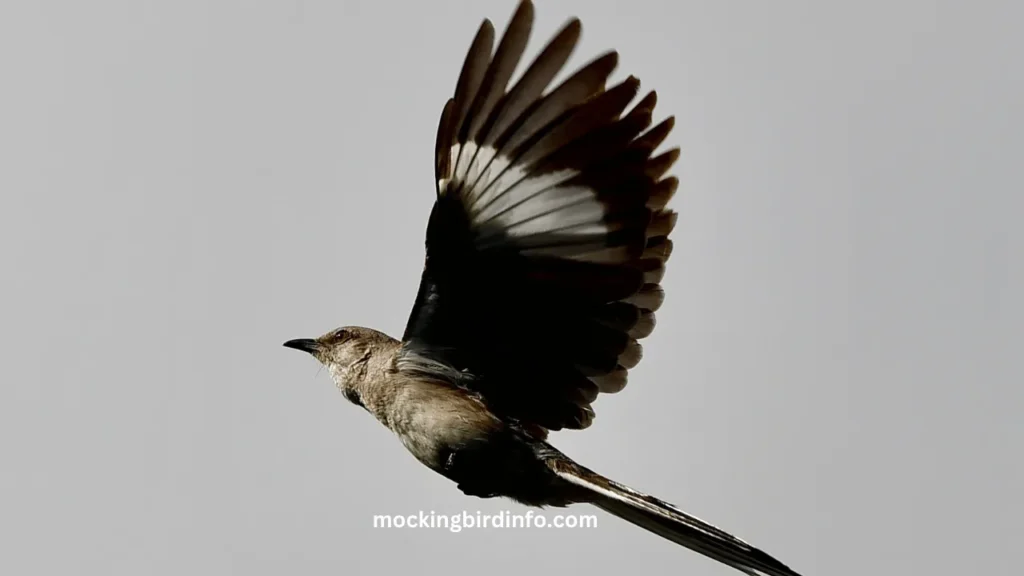
Using Natural Elements as Deterrents
Strategic plant selection can make your yard less inviting for mockingbirds. Plants with strong scents, like lavender or marigold, tend to repel birds. Shrubs or flowers with thorny stems, such as roses or holly, are less appealing as nesting spots.
These plants provide a natural deterrent without disrupting the garden’s aesthetic.Choosing bird-resistant plants that have tough, unpalatable leaves can discourage feeding. Additionally, reducing the amount of open soil or trimming back vegetation around your property can limit potential nesting spots.
Managing Food Sources
Mockingbirds are attracted to available food sources. Removing or securing bird feeders and ensuring that fruit-bearing trees and bushes are covered can help manage their presence. Fallen fruit should be promptly cleared to avoid attracting these birds.
Be mindful of insects and other natural food sources in your yard. While mockingbirds are helpful in controlling pests, abundant insects may attract them to stay longer. Organic pest control methods can reduce the number of insects without affecting other wildlife.
Legal Considerations
Under the Migratory Bird Treaty Act (MBTA), it’s illegal to harm, capture, or remove mockingbirds and their nests without special permits. This law applies to many bird species, ensuring their protection and conservation.
Violations can lead to heavy fines and legal repercussions. Local ordinances may have additional restrictions or guidelines for dealing with bird-related issues. Consulting your local wildlife agency or government office before taking action ensures that your approach is compliant with both federal and state laws.
Humane treatment is not only legally required but morally encouraged. Employing methods that scare away or deter birds without causing them harm helps maintain ecological balance and fosters respect for wildlife.
Advanced Techniques and Maintenance
For a long-term solution, consider combining multiple deterrent methods. For instance, using reflective objects alongside ultrasonic devices and bird netting can reinforce the deterrent effect. Switching up these strategies periodically can prevent mockingbirds from adapting to a single approach.
Regular maintenance of your yard can also help reduce the attraction for mockingbirds. This includes trimming hedges to limit nesting spots, removing excess yard debris, and ensuring no standing water is left outside, as water sources can invite birds.
Consider installing motion-activated sprinklers, which can serve as both a deterrent for birds and a way to keep your garden healthy. The sudden movement and water spray startle birds and make your yard less desirable.
Conclusion
Mockingbirds, with their engaging mimicry and defensive nature, can become a challenge when they choose to nest too close to human spaces. However, understanding their behavior and employing non-lethal deterrents such as visual, auditory, and physical methods can create an environment that discourages their presence without causing harm.
Integrating natural elements, like bird-resistant plants and organic pest control, further enhances your space and keeps it bird-free. Ensuring that your approach aligns with legal requirements guarantees you’re respectful of both wildlife and the law.
Achieving balance requires patience and a multi-faceted approach. With persistence, you can create a peaceful coexistence, ensuring your yard is a haven for you while respecting the role mockingbirds play in the ecosystem.
FAQs
1. Why are mockingbirds so aggressive?
Mockingbirds become aggressive when they are protecting their nests and territory, especially during breeding season. Their instinct is to defend against perceived threats.
2. What sounds do mockingbirds mimic?
They can mimic other bird calls, car alarms, ringing phones, and various household sounds. Their mimicry helps them establish territory and attract mates.
3. Are mockingbirds legally protected?
Yes, mockingbirds are protected under the Migratory Bird Treaty Act, which prohibits harming, capturing, or relocating them.
4. What visual deterrents work best for mockingbirds?
Reflective materials like Mylar tape or CDs and scarecrows that move can be highly effective at deterring mockingbirds.
5. Can I use sound to deter mockingbirds?
Yes, playing pre-recorded distress calls or using ultrasonic devices can help deter them by making the area feel unsafe.
6. Are there specific plants that discourage mockingbirds?
Yes, plants with strong scents (e.g., lavender) and those with thorny stems (e.g., roses) are less attractive to mockingbirds.

